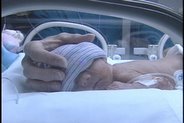- MRSA is airborne
- How is MRSA transmitted
- MRSA airborne ultraviolet light
- MRSA UVGI
- MRSA airborn
 Since there seems to be an interest in our point-of-view on MRSA and airborne transmission, I put together a White Paper that briefly reviews evidence supporting airborne MRSA. The links in the pdf file are active, so please feel free to click through to the supporting documentation.
Since there seems to be an interest in our point-of-view on MRSA and airborne transmission, I put together a White Paper that briefly reviews evidence supporting airborne MRSA. The links in the pdf file are active, so please feel free to click through to the supporting documentation.The truth is that MRSA is on our skin, is in the air and is on surfaces and fomites. Clearly, contact transmission predominates, but we ignore other sources (such as airborne) at our own peril. We view pathogenic microorganisms as opportunistic--they find any avenue to reproduce. When we eliminate one vector of transmission, they find others. We have cultured Staph, Pseudomonas, Klebsiella, Serratia and Acinetobacter from the cooling coils and drain pans of hospitals that we've tested. Our studies have shown that when the cooling coils are irradiated with UV, the pathogens are eradicated in the HVAC. This also corresponds to a lower environmental load for those pathogens in patient care areas.
Airborne's exact contribution to MRSA disease transmission is not known. However, we have seen that when you eliminate the pathogen reservoir inside the HVAC, there are less microorganisms downstream, where patients receive care.
Using VIGILAIR in a hospital complements existing Infection Control strategies; it does not replace them.
If you're interested in MRSA's airborne links, download this pdf for more information.


1 comment:
The pdf link is dead
Post a Comment